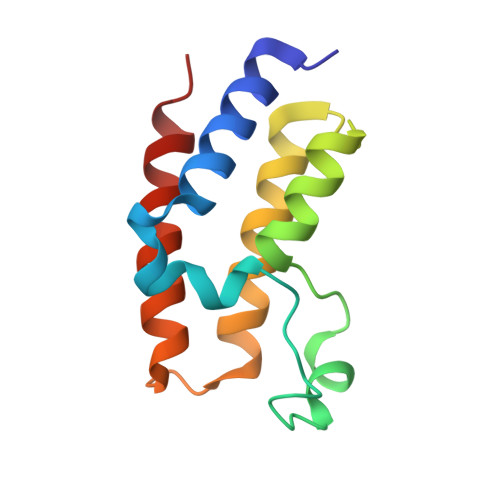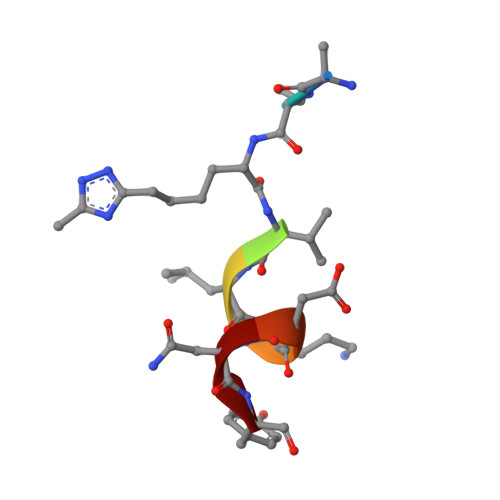Synthesis, Biochemical Characterization, and Genetic Encoding of a 1,2,4-Triazole Amino Acid as an Acetyllysine Mimic for Bromodomains of the BET Family.
Kirchgassner, S., Braun, M.B., Bartlick, N., Koc, C., Reinkemeier, C.D., Lemke, E.A., Stehle, T., Schwarzer, D.(2023) Angew Chem Int Ed Engl 62: e202215460-e202215460
- PubMed: 36585954
- DOI: https://doi.org/10.1002/anie.202215460
- Primary Citation of Related Structures:
8B5A, 8B5B, 8B5C - PubMed Abstract:
Lysine acetylation is a charge-neutralizing post-translational modification of proteins bound by bromodomains (Brds). A 1,2,4-triazole amino acid (ApmTri) was established as acetyllysine (Kac) mimic recruiting Brds of the BET family in contrast to glutamine commonly used for simulating this modification. Optimization of triazole substituents and side chain spacing allowed BET Brd recruitment to ApmTri-containing peptides with affinities similar to native substrates. Crystal structures of ApmTri-containing peptides in complex with two BET Brds revealed the binding mode which mirrored that of Kac ligands. ApmTri was genetically encoded and recombinant ApmTri-containing proteins co-enriched BRD3(2) from cellular lysates. This interaction was blocked by BET inhibitor JQ1. With genetically encoded ApmTri, biochemistry is now provided with a stable Kac mimic reflecting charge neutralization and Brd recruitment, allowing new investigations into BET proteins in vitro and in vivo.
- Interfakultäres Institut für Biochemie, Universität Tübingen, Auf der Morgenstelle 34, 72076, Tübingen, Germany.
Organizational Affiliation:

















